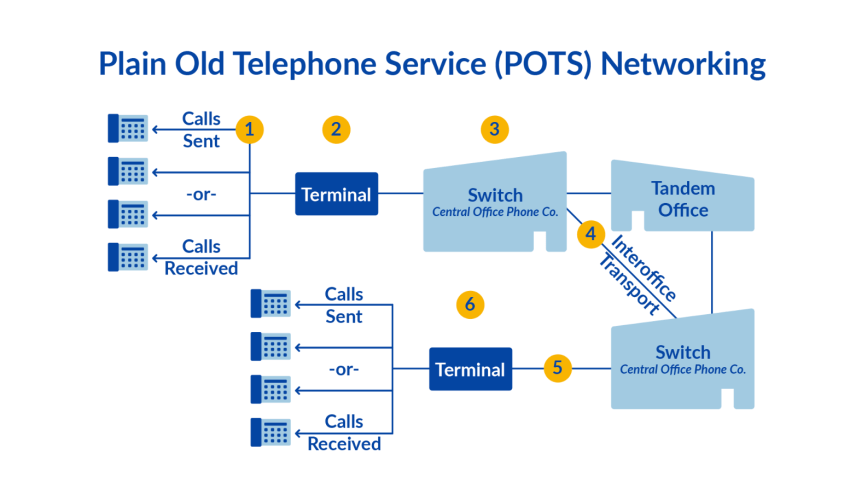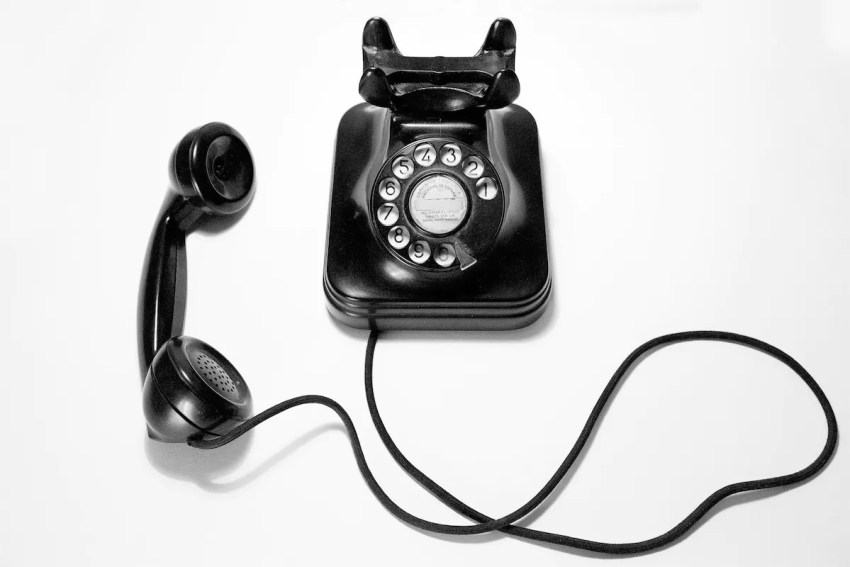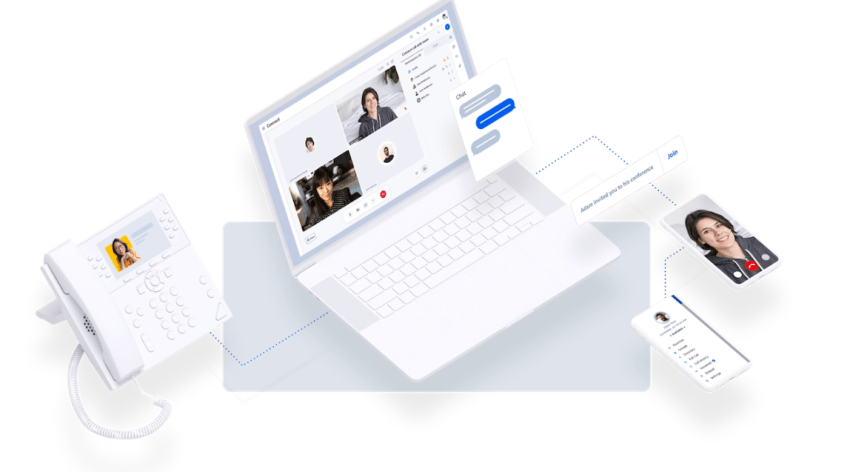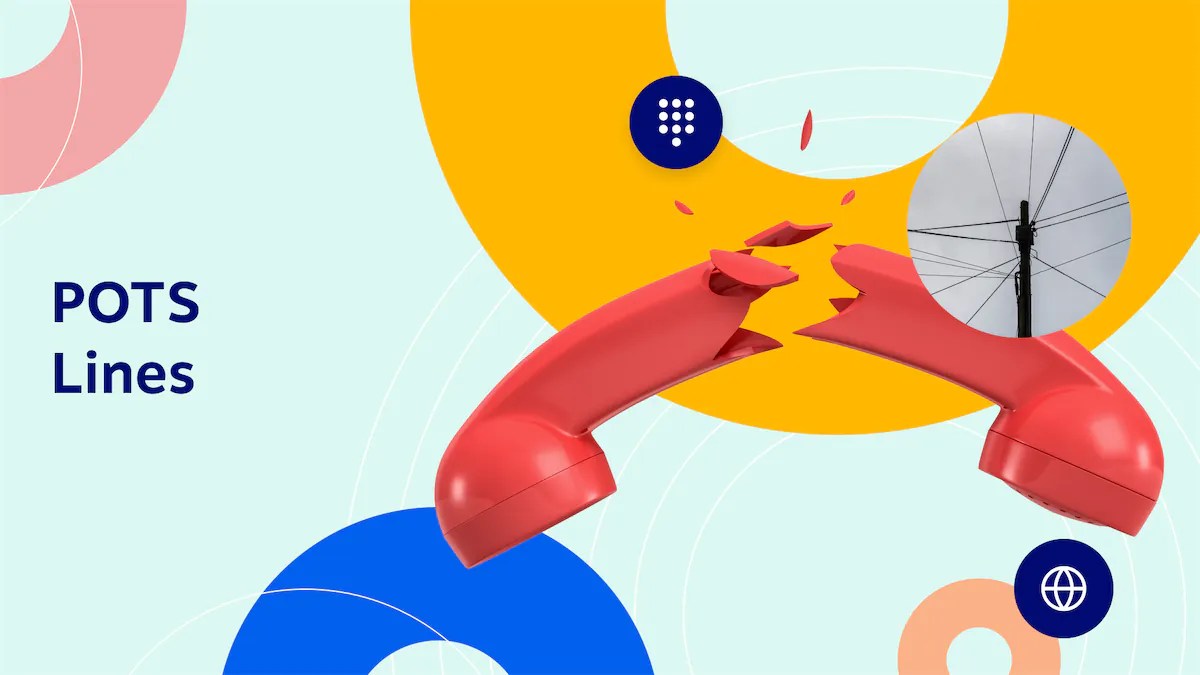Remember landlines? Yes, those old devices are still around. Although mobile phones and internet-based communications are now standard, the traditional landline (POTS) connection, which also serves as a telephone line, remains in use for both personal and business communications.
But its time is running out.
In this post, we take a closer look at POTS lines. We’ll explain what they are, their key features, and why this once-popular technology is now being phased out. Most importantly, we’ll explore alternatives to POTS lines to help you choose the best communication technology for your business needs.
What Is a POTS Line?
Plain Old Telephone Service (POTS) is the traditional analog voice transmission service implemented over a network of twisted-pair copper wires. The service is provided directly by a local telephone company and forms the basis of the Public Switched Telephone Network we’ve used for over a century.

Here are some key characteristics of a POTS line:
- Copper wire foundation: POTS is based on a physical network of copper wires, the kind that have been buried underground for decades. This is the POTS line cable.
- Central power source: Unlike modern telephones, POTS lines draw their power directly from the telephone company’s central office. This is why traditional landline telephones are known to work even during power outages.
- Dedicated lines: When you make a call over a POTS line, a dedicated, exclusive line is established between the two callers for the duration of the call..
POTS History You Should Know About
POTS technology dates back to the late 19th century, when Alexander Graham Bell invented the telephone. This system, designed for a single purpose — voice communication — grew into a vast global network. At its peak in the 1990s, POTS had hundreds of millions of subscribers in the U.S. alone.
POTS is sometimes used synonymously with Public Switched Telephone Network (PSTN). The difference is that POTS refers to the analog technology and service, while PSTN refers to the entire public switched telephone network itself, which now includes digital components.
How Does a POTS Line Setup Work?
The POTS line setup has remained virtually unchanged for decades. It involves a physical connection from the telephone company’s central office to a building’s network interface box, where it’s then connected to the internal wiring and telephone jacks.
POTS works by creating a dedicated circuit between two telephones during a call. In the past, an operator had to connect the two telephones for the call manually. But switching is now automated, and today, the system is almost entirely digital.

Here’s how a call connects traditionally via POTS:
1. Analog signaling
Voice, as we speak it, cannot be transmitted on its own. The handset’s microphone converts sound waves from the caller’s voice into analog electrical signals. The signals flow through the copper wire network and reach the receiver’s phone.
The building’s separate telephone lines combine into a network interface box where the phone lines converge into one line of service from the phone company.
2. Transmission
After creating analog signals, they’re transmitted from the caller’s telephone to the receiver’s phone over copper lines.
In the early days of telephony, this required actually running wires between them. This meant the longer the distance, the more expensive the phone call. No wonder long-distance calls in the past cost a fortune.
To cut costs, switches were placed at centralized points in the network. These central offices are known as telephone exchanges. They connected multiple POTS lines and determined the most efficient path for the call to reach its destination.
Switches act as communication nodes between any two points in the network. To connect one phone to another, calls are routed through one or more local, regional, national, or international switches.
3. Dedicated call circuits
When the caller dials the phone number to initiate a call, the receiver’s phone rings. Once answered, a direct, exclusive connection (a dedicated circuit) is established between the phones.
This dedicated circuit is as reliable as circuit technologies come. The only limitation is that the line has to be reserved for one call and one call only. This is known as circuit switching. It allows both parties to converse without interference from other calls.
4. Signal decoding and voice reconstruction
At this stage, analog signals are decoded to reconstruct the original sound waves at the receiver’s end. This means the caller’s voice, as spoken, is heard through the telephone speakers as audible sound.
This step completes the communication loop. The receiver hears the caller’s voice as if they were speaking in person.
One of the two communicating parties must hang up the phone to end the call. The dedicated circuit created during the call is disconnected. This returns the telephone line to standby, ready for another call.

What Is a POTS Line Used For?
POTS lines aren’t entirely outdated yet. They’re used for consistent, secure, and straightforward communication. Let’s look at a few common use cases:
- Fax transmission and reception: Fax machines used to be quite common some two decades back. Fax (short for facsimile) technology can transmit scanned documents from one machine to another via POTS lines.
- Credit card processing systems: The connectivity that POTS offers is great for processing credit card authorizations. Traditional credit card processing services sit atop POTS lines in areas with limited internet access.
- Security and alarm systems: POTS is a consistent technology for older security and alarm systems because of its dependability. It provides a dedicated line for these systems to talk to monitoring centers or emergency services. These analog phone systems usually work even during power outages.
- Elevator communication systems: Internet connection is often limited inside elevators. POTS has no such problems. It is perfect for elevator communication systems because of its wired connectivity. It provides a direct line from the elevator to emergency responders with a solid connection in case something goes wrong.
- Digital subscriber lines (DSL): DSL, an acronym for Digital Subscriber Line, is a high-speed connection delivered via a POTS line. It requires additional investment in the telephone company to provide high-bandwidth connectivity. DSL also requires that users purchase a special modem and noise filters to separate traditional voice and data signals.
There’s a more modern answer to all these use cases. For instance, online faxing has become a better alternative to analog faxes. And alarm systems have cellular service now.
The Copper Sunset & Why POTS Lines Are Being Phased Out
For decades, analog telephony was considered the standard in reliability. Its greatest advantage was its simplicity and robustness — it worked even during power outages, making it a lifeline in emergencies. High reliability is the reason many businesses clung to their analog connections for so long.
However, digital communications technology has come far, and the era of copper-cable telephony is coming to an end. This industry-wide phase-out, referred to as the “copper sunset,” is occurring for several important reasons and disadvantages.
Disadvantages of POTS lines
The POTS technology has stood the test of time. However, its advantages are offset by the disadvantages. Let’s see how they stack.
Crumbling infrastructure and rising costs
The main reason is economic. The vast copper cable network that supports POTS is aging; some lines are over a hundred years old. Maintaining this dilapidated infrastructure is expensive for telecommunications companies. Weather damage, deterioration, and the need for specialized technicians make the costs prohibitive compared to modern fiber optic and mobile networks.
Severe features and technology limitations
Cost aside, POTS technology is limited. Businesses now rely more on unified communications; POTS lines offer little functionality besides basic voice calls. This is one of their biggest drawbacks. They lack important modern features that businesses now consider standard, such as:
- Video conferencing
- Voicemail-to-email transcription
- Intelligent call forwarding
- Enterprise SMS messaging
- Integration with enterprise software (CRMs)
This rigidity makes it difficult for businesses to remain competitive and operate efficiently. POTS lines are also prone to noise, interference, and lower voice quality compared to the HD voice quality of IP telephony systems.
Regulatory hurdles
Regulators have recognized this inevitable change and paved the way. The Federal Communications Commission (FCC) isn’t requiring operators to stop maintaining their copper networks, but is taking action to accelerate the transition to modern networks like fiber optics, while helping phone services transition more quickly and not immediately abandon copper.
Telecom companies like AT&T and Verizon have been given the green light to stop investing in old technology and transition their customers to better alternatives like fiber optic and 5G.
In short, while POTS has had its run, its high maintenance costs, lack of features, and technological obsolescence have made it impractical. “Copper sunset” isn’t just about a technology becoming obsolete, but making way for faster, cheaper, and significantly more powerful cloud communications systems.
POTS Line Replacement: What Are the Alternatives?
As POTS services become expensive and less available, businesses need to switch to an alternative. Fortunately, several reliable and feature-rich POTS replacement solutions are available.
- Voice over Internet Protocol (VoIP): Voice over IP is the most popular and robust POTS replacement. VoIP converts your voice into digital data that travels over your existing internet connection. You can use it via desk phones, computer softphones, or mobile apps. Get immense flexibility and a rich set of business features.
- Cellular/LTE solutions: For uses like fire alarms or elevators, a cellular adapter can be a great option. These devices use the 4G/5G cellular network to provide a dial tone to legacy analog equipment, creating a reliable connection without a physical wire.
- Fiber optic lines: If you’re upgrading your internet, you can bundle voice services over the same fiber optic connection. This provides clear call quality and incredible bandwidth for all your business needs.
What Is the Difference Between POTS and VoIP?
For most businesses, the question is whether to stick with a limited POTS connection or switch to VoIP. Here’s how both phone services compare.
| Function | POTS | VoIP |
|---|---|---|
| Technology | Analog network (copper wires) | Digital network (internet) |
| Call quality | Stable but can degrade; no HD | HD voice |
| Features | Basic (caller ID is extra) | Advanced (call routing, auto attendant, voicemail-to-email, video, SMS) |
| Cost | High per-line cost, rising annually | More cost-effective, up to 60% lower, bundled features |
| Reliability | Works in power outages | Requires internet & power (can be backed up) |
| Scalability | Rigid, requires a technician to install | Highly flexible, add or remove users online in minutes |
Business VoIP adoption is also on the rise to account for work-from-home employees. More and more remote organizations are ditching their POTS service and analog lines for VoIP service. Even on the personal front, people are choosing apps like WhatsApp, Viber, or FaceTime to talk to loved ones. They all use VoIP technology.

VoIP is undoubtedly the future of telecommunications. It’s rapidly taking over market share from POTS. But if you have a POTS line, don’t write it off just yet. You might still be able to get some use out of it.
Can You Still Find POTS Landline Providers and Plans?
What if you’re not ready to switch from POTS?
This telecom technology is helpful for emergencies or those who find mobile phones hard to use. POTS is still a good option for personal use or small businesses.
But finding a new POTS service is becoming difficult and expensive. The main providers are established network operators like AT&T, Verizon, and Lumen, but they actively encourage their customers to switch to their fiber or cellular alternatives. Existing POTS access plans are basic, with high monthly costs per line and multiple add-ons, and lack the essential features for a new-age business. Your best long-term strategy is to switch from POTS.
The Best POTS Alternative: Nextiva
Switching from POTS to VoIP is a business communications upgrade. When choosing a VoIP provider, look for reliability (guaranteed availability), advanced features, scalability for growth, and transparent pricing.
Nextiva is a leading VoIP phone service provider trusted by over 100,000 businesses to replace legacy POTS systems. With 99.999% uptime and award-winning support, Nextiva offers customized plans for different business needs.
For instance, small businesses can choose Nextiva’s Core plan. This includes inbound and outbound calling, business SMS, video conferencing, team chat, call forwarding with a virtual receptionist, and integrations with Outlook and Google Contacts — all at an incredibly low price. Nextiva also offers higher-end plans for growing and large businesses, so there’s something for everyone.

VoIP features our customers love:
- Unlimited nationwide calling
- Business text messaging
- Unlimited online faxing
- Video conferencing
- Smart call routing
- Voicemail transcription
- Customizable Caller ID
- On-demand call recording
- Business call forwarding
- Mobile and desktop softphones
Communication, collaboration, connectivity — VoIP can bring a marked improvement in all aspects. All this is cheaper than POTS. So, what’s stopping you from moving to VoIP?
⚡️ Case Study: Tricoci Salons Upgraded Its On-Prem Phone System to the Cloud

POTS Line FAQs
The landline phone at your home is a classic example of a POTS line. If not, the telephone you see in elevators is likely a POTS line as well. Some offices, too, have POTS lines, but those are increasingly rare in today’s world. Typically, POTS lines aren’t connected to a private branch exchange, known as a PBX. This means that calls can only occur between one caller at a time.
Indeed, yes. While there’s no uniform national shutdown date, telephone companies are shutting down their copper networks in certain areas, making the service more expensive and eventually unavailable.
Yes. You can use a traditional phone with a VoIP phone system by connecting it to an analog telephone adapter (ATA). However, to access all VoIP features, such as presence monitoring and HD Voice, we recommend using a native VoIP desk phone.
Reputable VoIP providers offer E911 (Enhanced 911). They register your physical address for each phone. When you call 911, your location is automatically transmitted to emergency services, just like with a traditional landline.
Absolutely. The process is called “number porting,” and your new VoIP provider can manage transferring your existing phone number from your old provider without any downtime.

















 VoIP
VoIP 









